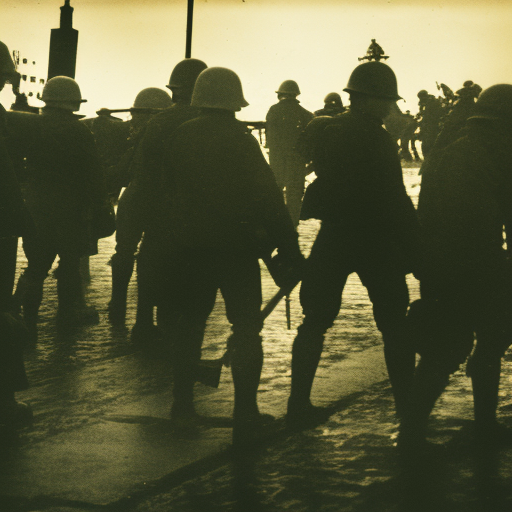Battle of Nieuwpoort: A Decisive Clash in the Eighty Years’ War
The Battle of Nieuwpoort, fought on July 2, 1600, was a significant confrontation during the Eighty Years’ War between the Dutch Republic and the Spanish Empire. The battle took place near the town of Nieuwpoort in present-day Belgium and resulted in a decisive victory for the Dutch forces led by Maurice of Nassau, Prince of Orange.
Background:
The Eighty Years’ War, also known as the Dutch War of Independence, was a conflict between the Dutch Republic and the Spanish Empire. The Dutch sought to break free from Spanish rule and establish their own independent state. By the late 16th century, the war had been ongoing for several decades, with both sides experiencing victories and setbacks.
Spanish Offensive:
In 1599, the Spanish launched a major offensive in an attempt to regain control over the rebellious Dutch provinces. The Spanish commander, Archduke Albert of Austria, sought to capture the strategic port city of Ostend and cut off Dutch access to the sea. To achieve this, he planned to capture the nearby town of Nieuwpoort, which would provide a base for the siege of Ostend.
Dutch Response:
Maurice of Nassau, the Dutch Stadtholder and military commander, recognized the importance of preventing the Spanish from capturing Nieuwpoort. He assembled an army of around 12,000 men and marched to confront the Spanish forces. Maurice’s army consisted of a mix of professional soldiers and citizen militias, known as the “civic guards.”
The Battle:
On July 2, 1600, the Dutch army arrived near Nieuwpoort and found the Spanish forces entrenched along the beach and dunes. The Spanish army, numbering around 8,000 men, was led by the experienced commander, Albert of Austria. The Dutch forces launched a series of attacks, attempting to dislodge the Spanish from their positions.
The battle was characterized by intense fighting, with both sides suffering heavy casualties. The Dutch employed innovative tactics, including the use of mobile artillery and infantry formations, to break the Spanish lines. Maurice personally led several charges, inspiring his troops and inflicting significant losses on the Spanish.
After several hours of fierce combat, the Dutch managed to breach the Spanish defenses and push them back towards the sea. The Spanish forces, demoralized and outnumbered, began to retreat. The Dutch pursued them, inflicting further casualties and capturing many prisoners.
Outcome and Significance:
The Battle of Nieuwpoort was a resounding victory for the Dutch Republic. The Spanish suffered heavy losses, with over 2,000 men killed or captured, while the Dutch losses numbered around 1,500. The battle prevented the Spanish from capturing Nieuwpoort and disrupted their plans to besiege Ostend.
The Dutch victory at Nieuwpoort boosted morale and demonstrated the effectiveness of Maurice’s military reforms. It also highlighted the importance of mobile artillery and disciplined infantry formations in modern warfare. The battle marked a turning point in the Eighty Years’ War, as the Dutch Republic gained confidence and momentum in their struggle for independence.
Despite their defeat at Nieuwpoort, the Spanish continued to wage war against the Dutch Republic for several more decades. The conflict finally ended in 1648 with the signing of the Treaty of Westphalia, which recognized the independence of the Dutch Republic.
The Battle of Nieuwpoort remains an important event in Dutch history and is often celebrated as a symbol of Dutch resilience and determination. The battlefield itself has been preserved as a national monument, serving as a reminder of the sacrifices made by those who fought for Dutch independence.












